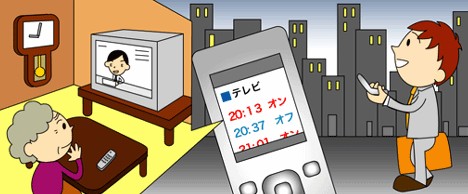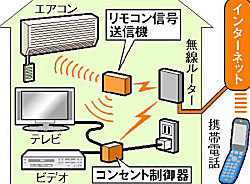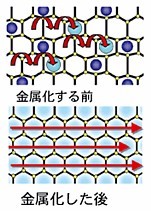 Hakuhodo DY Group i-Business Center and IT DeSign have developed "movie QR code," a type of QR code that incorporates moving video into the design.
Hakuhodo DY Group i-Business Center and IT DeSign have developed "movie QR code," a type of QR code that incorporates moving video into the design.
QR code is a type of two-dimensional barcode that has grown popular in Japan in recent years, because it provides a simple, automated way for users to enter data into their mobile phones. By using mobile phones to scan QR code that appears in an outdoor advertisement, for example, users may be directed to a website containing more detailed product information.
To personalize the appearance of printed QR code, which looks like a chaotic arrangement of tiny black and white squares, IT DeSign recently developed "Design QR," which incorporates static images of logos, characters or photos into the code. Movie QR code takes this concept a step further by incorporating moving images into the design, thus optimizing it for use on video screens, where it promises to be more effective in attracting the attention of potential scanners. Seriously, how will anyone be able to resist scanning a bit of on-screen QR code if, for example, it contains a cute, bug-eyed critter that literally begs you to scan it?
Movie QR code works just like standard QR code -- any user armed with a reader-equipped cellphone can scan it.
On May 21, the companies plan to launch a new type of advertising service built around the use of movie QR code. Details of the service will be announced soon.
Interestingly, a commercial video containing QR movie code has been circulating the web for a while. The video, called "Kung Fu High School Girls" (Kanfuu Joshi-kousei), begins with two high school girls talking about Black Jack (the famous manga character), who they both think is cool. Things quickly turn ugly when the girls disagree about whether Black Jack is a foreigner or Japanese, and a full-on kung fu battle ensues. After a while, a boy wearing a giant QR code headpiece arrives on his bicycle and urges the girls to stop. By scanning his face, he explains, they can find the answer to their question and settle their dispute. (This is a cue for the viewer to scan the computer screen with a cellphone QR code reader.)
Scanning the movie QR code takes you to http://aniful.jp/pr/ (which appears to be accessible only by keitai), where there is a link to another video that contains the answer. For some reason, the Pink Tentacle keitai is having problems downloading that video, so we may never know the truth. Is Black Jack Japanese? Or a foreigner?
[Sources: IT Media, "Kung Fu High School Girl" video (non-YouTube version)]

 What happens when you combine chinsukou (a traditional Okinawan cookie made from flour and lots of lard) with chinko (slang for male genitalia)? You get chinkosukou, a phallus-shaped fertility cookie, of course.
What happens when you combine chinsukou (a traditional Okinawan cookie made from flour and lots of lard) with chinko (slang for male genitalia)? You get chinkosukou, a phallus-shaped fertility cookie, of course. 
 In addition to being able to control the room temperature, blast the stereo and program the video recorder -- all while outside the home -- users can also check the current operating status of each device and view records of how each device has been used. According to NTT-Neomeit, this ability to monitor device usage provides a convenient way for users to keep tabs on the activity of their elderly parents from afar.
In addition to being able to control the room temperature, blast the stereo and program the video recorder -- all while outside the home -- users can also check the current operating status of each device and view records of how each device has been used. According to NTT-Neomeit, this ability to monitor device usage provides a convenient way for users to keep tabs on the activity of their elderly parents from afar. Robots can get away with things that humans cannot. In the Minami area of Osaka, for example, a humanoid robot dressed in a "sailor suit" high school uniform now works the street as a tout for an adult information center that navigates potential customers to local sex clubs. Humans in Osaka are prohibited by law from engaging in such nefarious activity.
Robots can get away with things that humans cannot. In the Minami area of Osaka, for example, a humanoid robot dressed in a "sailor suit" high school uniform now works the street as a tout for an adult information center that navigates potential customers to local sex clubs. Humans in Osaka are prohibited by law from engaging in such nefarious activity.








 Tokyo-based
Tokyo-based